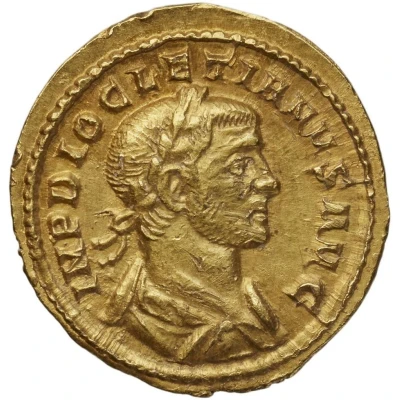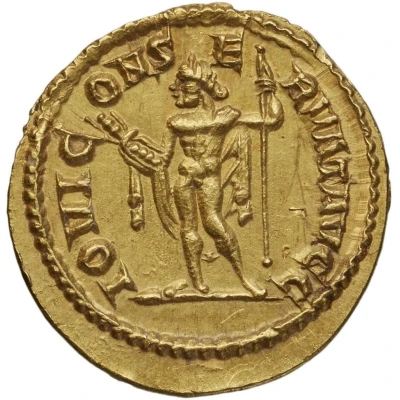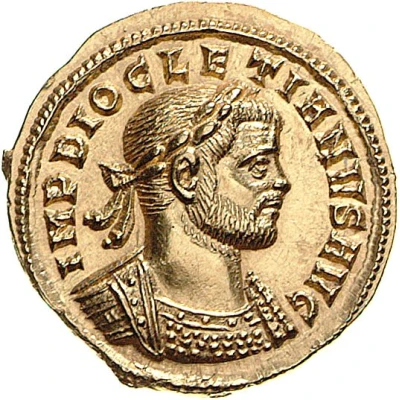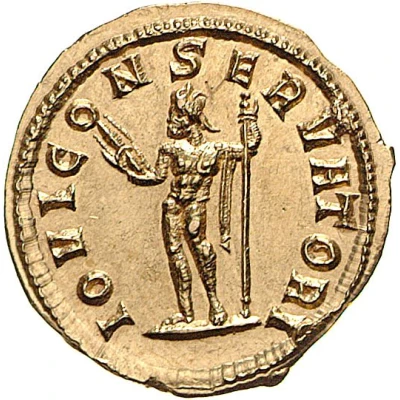


© Bibliothèque nationale de France / Gallica
Quinarius Aureus - Diocletian IOVI CONSERVAT AVGG; Jupiter
| Gold | 1.72 g | - |
| Issuer | Rome › Roman Empire (27 BC - 395 AD) |
|---|---|
| Emperor | Maximian Herculius (Marcus Aurelius Valerius Maximianus) (286-305) |
| Type | Standard circulation coin |
| Years | 284-294 |
| Value | Gold Quinarius (25⁄4) |
| Currency | Antoninianus, Reform of Caracalla (AD 215 – 301) |
| Composition | Gold |
| Weight | 1.72 g |
| Shape | Round (irregular) |
| Technique | Hammered |
| Demonetized | Yes |
| Updated | 2024-10-05 |
| Numista | N#305891 |
|---|---|
| Rarity index | 100% |
Reverse
Jupiter, standing left, holding thunderbolt in right hand and sceptre in left hand.
Script: Latin
Lettering: IOVI CONSERVAT AVGG
Unabridged legend: Iovi Conservatori Duorum Augustorum.
Translation: To Jupiter, protector of the two emperors (Augusti).
Comment
Source:Online Coins of the Roman Empire (OCRE)
Interesting fact
One interesting fact about the Quinarius Aureus - Diocletian (IOVI CONSERVAT AVGG; Jupiter) coin is that it was issued during a time of economic reform and currency standardization in the Roman Empire. The coin was introduced by Emperor Diocletian in 284 AD as part of his efforts to stabilize the empire's economy and combat inflation. The Quinarius Aureus was made of gold and had a standardized weight of 1.72 grams, which was a significant departure from the previous system of irregularly shaped and weighted coins. This coin's design featured an image of Jupiter on one side and the emperor's name and title on the other, symbolizing the Roman Empire's shift towards a more centralized and organized system of governance.

